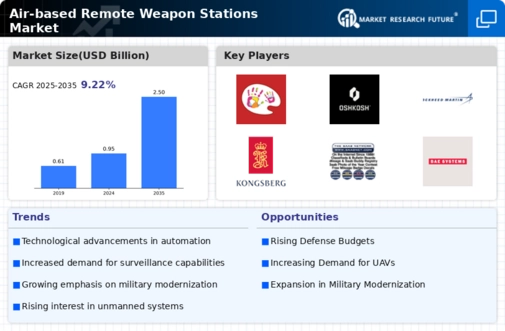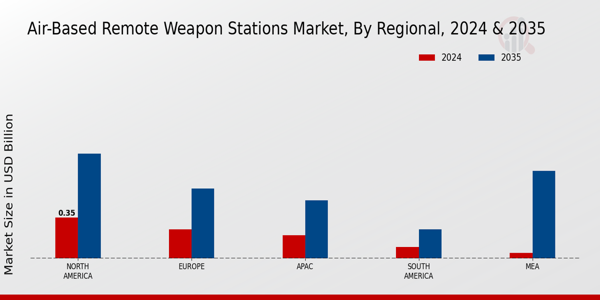The Air-based Remote Weapon Stations Market is characterized by a rapidly evolving competitive landscape driven by technological advancements and increased military expenditure across various nations.
As armed forces modernize their equipment to address contemporary battlefield requirements, the demand for Air-based remote weapon stations that ensure precision targeting and reduced risk to personnel is on the rise. This sector shows significant growth potential, particularly as defense budgets expand and nations seek to enhance their aerial combat capabilities.
The competitive environment is influenced by the presence of several key players focusing on innovative solutions, collaborative partnerships, and strategic acquisitions to gain a competitive edge.
The market is also affected by the varying regulations and foreign policies of different regions, which create both challenges and opportunities for manufacturers looking to penetrate new markets or expand their offerings.
Leonardo has carved a niche in the Air-based Remote Weapon Stations Market, positioning itself as a strong player by leveraging its extensive expertise in aerospace and defense technologies. The company boasts a robust portfolio of advanced remote weapon systems that are highly appreciated in military applications for their reliability and effectiveness.
Leonardo's strengths lie in its commitment to innovation, with significant investments in research and development aimed at enhancing the precision and performance of its weapon stations. Moreover, the company's strategic alliances with other defense contractors and government agencies provide valuable insights into emerging market needs, allowing Leonardo to tailor its products accordingly.
The integration capabilities of its systems with manned and unmanned platforms further strengthen its competitive position, making it a preferred choice for many military organizations around the world.
DRS Technologies maintains a solid footing in the Air-based Remote Weapon Stations Market, focusing on the development of cutting-edge systems designed to enhance situational awareness and operational effectiveness in military operations.
Known for its advanced sensor technologies and command and control systems, DRS Technologies emphasizes the importance of integrating these elements into its weapon stations to provide users with superior targeting and engagement capabilities.
The company is recognized for its customer-centric approach, ensuring that its solutions meet the specific requirements of the armed forces. With an agile design philosophy, DRS Technologies can quickly adapt to changing defense needs and operational scenarios, thereby remaining competitive in the rapidly shifting market landscape.
Furthermore, DRS Technologies continues to expand its footprint through strategic partnerships and collaborations, enhancing its product offerings and enhancing its overall market presence in the Air-based remote weapon systems domain.























Leave a Comment